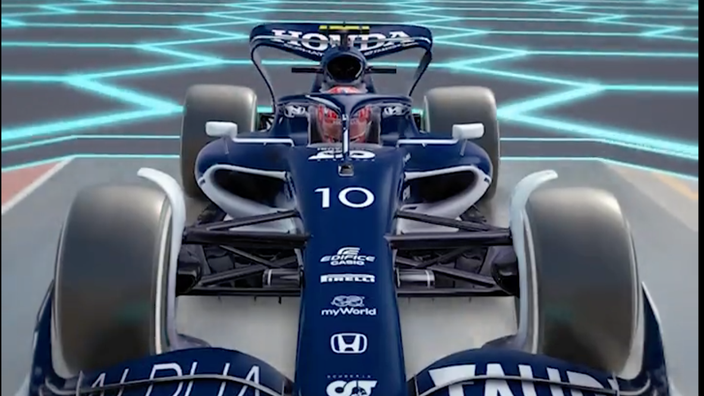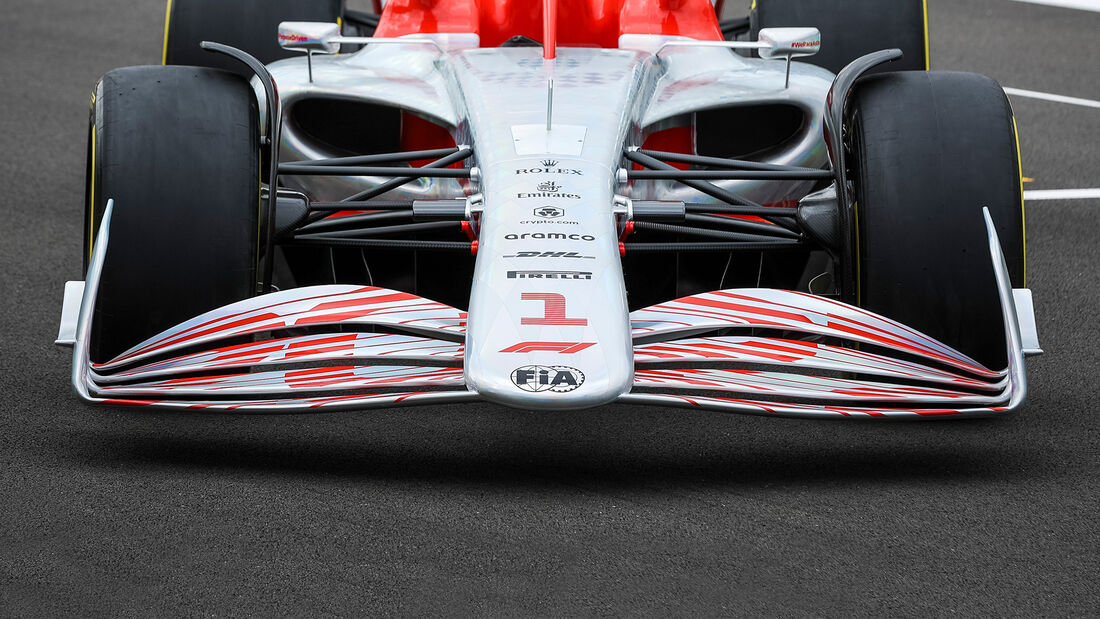No - it wouldn't help anyway without Y250 downwash.
- Login or Register
No account yet? Sign up
The rules are very limiting on how much the shape of each element can vary from end to end. It’s almost as though they have thought of this!!
As Stu said yeah, very restricting. Most of the downwash will be from front suspension which is also heavily restricted.
mzso wrote: ↑06 Jan 2022, 20:10If you can follow it. It's f-ing exclusive now that it cannot be watched anywhere... And I'm not about torture myself with illegal internet streams, especially from America with 8 minutes of advertisement for every five minutes of racing. I did it once, it was enough. Same damn Silverado commercial 10 times in a single hour.Hoffman900 wrote: ↑06 Jan 2022, 17:39Indy Car is a much better viewing / racing product than F1, they’re just a little slower, heavier, and less downforce.
I hate that it’s being used as a negative because it’s a fun series to follow.

I was thinking the same thing the other day. It's not possible to have lifting wings because of this rule. The best you could do is have NACA 4-digit style neutral wing sections with a lot of nose up incidence.
3.9 f. Assessing each closed section independently, the part of any closed section visible when viewed from below may contain no concave radius of curvature.
That doesn't make sense as the cape was not used to route the y250, but rather provide clean air behind the bargeboards to the leading edge of the floor. The y250 ran along the bargeboards.
The cape had a big influence over the y250 position and intensity.godlameroso wrote: ↑07 Jan 2022, 23:16That doesn't make sense as the cape was not used to route the y250, but rather provide clean air behind the bargeboards to the leading edge of the floor. The y250 ran along the bargeboards.
By stopping the y250 from migrating inboard, but it also interfered with y250 formation if it was too far forward. The stagnation pressure at the cape inlet also steered the y250 as a high pressure trough steers hurricanes. But I'm drawing a blank as to what was meant by downwash from the y250. Help me out here. How would no y250 stop a cape from helping to channel front wing airflow to the floor a bit more effectively? Other than it being illegal per regulations ofc.jjn9128 wrote: ↑08 Jan 2022, 00:03The cape had a big influence over the y250 position and intensity.godlameroso wrote: ↑07 Jan 2022, 23:16That doesn't make sense as the cape was not used to route the y250, but rather provide clean air behind the bargeboards to the leading edge of the floor. The y250 ran along the bargeboards.
The downwashing side of the Y250 hits the cape edge at almost 90 degrees - most importantly the cape vortex can only exist if the Y250 provides the downwash. The goal here is to NOT make the cape provide clean air but rather lots of mixing. Notice that the cape is counter rotating to the Y250 BUT co-rotating to the barge board floor slots and the floor leading edge vortex generators. The whole aim of these cars is to spin the air one way under the floor to get more mixing. The cape is the first, then O-nose fences (where applicable) then barge board slots, then floor leading edge vortex generators and finally diffuser strakes.godlameroso wrote: ↑08 Jan 2022, 01:22By stopping the y250 from migrating inboard, but it also interfered with y250 formation if it was too far forward. The stagnation pressure at the cape inlet also steered the y250 as a high pressure trough steers hurricanes. But I'm drawing a blank as to what was meant by downwash from the y250. Help me out here. How would no y250 stop a cape from helping to channel front wing airflow to the floor a bit more effectively? Other than it being illegal per regulations ofc.jjn9128 wrote: ↑08 Jan 2022, 00:03The cape had a big influence over the y250 position and intensity.godlameroso wrote: ↑07 Jan 2022, 23:16That doesn't make sense as the cape was not used to route the y250, but rather provide clean air behind the bargeboards to the leading edge of the floor. The y250 ran along the bargeboards.
So the y250 downwash raises the pressure on the top surface of the cape, creating the pressure differential between the upper and lower surface to make the CC cape vortex?theVortexCreatorY250 wrote: ↑08 Jan 2022, 01:45The downwashing side of the Y250 hits the cape edge at almost 90 degrees - most importantly the cape vortex can only exist if the Y250 provides the downwash. The goal here is to NOT make the cape provide clean air but rather lots of mixing. Notice that the cape is counter rotating to the Y250 BUT co-rotating to the barge board floor slots and the floor leading edge vortex generators. The whole aim of these cars is to spin the air one way under the floor to get more mixing. The cape is the first, then O-nose fences (where applicable) then barge board slots, then floor leading edge vortex generators and finally diffuser strakes.godlameroso wrote: ↑08 Jan 2022, 01:22By stopping the y250 from migrating inboard, but it also interfered with y250 formation if it was too far forward. The stagnation pressure at the cape inlet also steered the y250 as a high pressure trough steers hurricanes. But I'm drawing a blank as to what was meant by downwash from the y250. Help me out here. How would no y250 stop a cape from helping to channel front wing airflow to the floor a bit more effectively? Other than it being illegal per regulations ofc.


